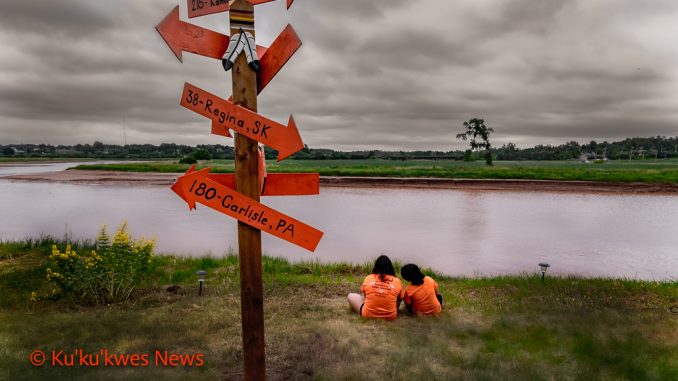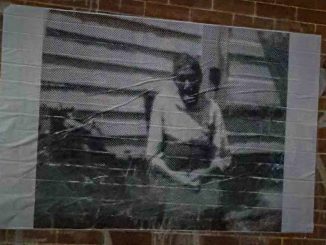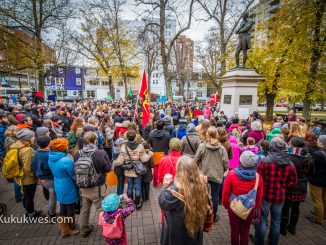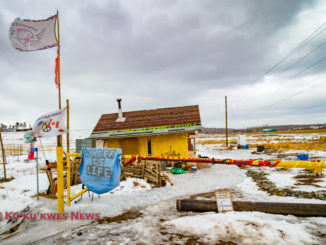
There was no parade along Main Street in the Village of Shubenacadie, N.S. this year to celebrate Canada Day. Instead, more than 200 people chose to gather along the banks of the Shubenacadie River on July 1 to join the survivors of the Shubenacadie Indian Residential School to take part in cultural activities to counter the devastating effects the former school had on Indigenous people who attended the school.
The day-long event took place at the bottom of a hill where the former residential school once stood. Tents and tables were set up on both sides of Old Indian School Road where people, Indigenous and non-Indigenous, could chat with elders or learn about Mi’kmaw traditions and games like waltes.

Other cultural activities also took place in the afternoon in nearby community of Indian Brook First Nation, which is part of the Sipekne’katik First Nation.
Several children from Indian Brook performed the Mi’kmaq Honour Song for the crowd in Shubenacadie.
For Dorene Bernard, a residential school survivor, she said this year’s July 1 gathering was moving.
“It really means a lot to me. I never really celebrated Canada Day much,” Bernard said. “I think it’s really moving that a lot of non-native Canadians also feel like this is a time for reflection,” she added.

More remains found at residential school sites in B.C., Sask.
In the weeks leading up to July 1, there were calls from both Indigenous and non-Indigenous people to cancel Canada Day celebrations after the remains of 215 children were first discovered buried at the former site of the Kamloops Indian Residential in British Columbia in May. Since then, nearly a thousand more human remains and unmarked graves have also been discovered at other former residential school sites in British Columbia and Saskatchewan.
Many Canada Day events in the Atlantic Canada region were cancelled due to COVID-19 restrictions. Instead, events like the one held in Shubenacadie took place in many First Nation communities. In Halifax, hundreds gathered at the newly named Peace and Friendship Park to commemorate the Indigenous children who died while attending residential school.

The Sipekne’katik First Nation teamed up with Saint Mary’s University to scan the former grounds of the Shubenacadie Indian Residential School to search for possible human remains using electromagnetic induction and ground-penetrating radar.
According to Sipekne’katik Chief Mike Sack, the team has scanned approximately thirty per cent of the land surrounding the former school site.
“As of right now, there’s isn’t anything that really stands out as findings,” Chief Sack told reporters on Thursday.
Chief Sack said it felt “good driving through the community and seeing the orange shirts” placed on the local residents’ lawns in Shubenacadie and the neighbouring communities.
“It’s not about shaming Canada Day. It’s more about making everybody familiar, educating them on what is happening and we’re looking to go, to let them know we’re resilient people and we’re here. We’re not going anywhere,” Chief Sack said to the cheering crowd.
“We still have our traditions” – Earl Sack
Mi’kmaw elder Earl Sack set up a tent along the riverbank and filled it with traditional items that were gifted to him at cultural events throughout the years. Some of those items included a bear skin pelt, a fox pelt, a dreamcatcher, a ladle with turtle carvings and a rattle.
“I brought everything I had for the people, the residential school people that passed away,” Sack explained. “This tent is an offering to them, the spirits, and show that we’re still here. We still have our traditions,” he said.

For Bernard, she hopes the rest of Canadians really take the time to understand culture and history from an Indigenous point of view.
“We’re still living under many parts of society (where) we lack equality in healthcare, education and the justice system,” Bernard said.
“I think it’s really important that this education is offered throughout out education system because there are generations of people that don’t even know about the residential schools and see this as ancient history,” she explained.
“The damage done to our people is still being felt today.”




